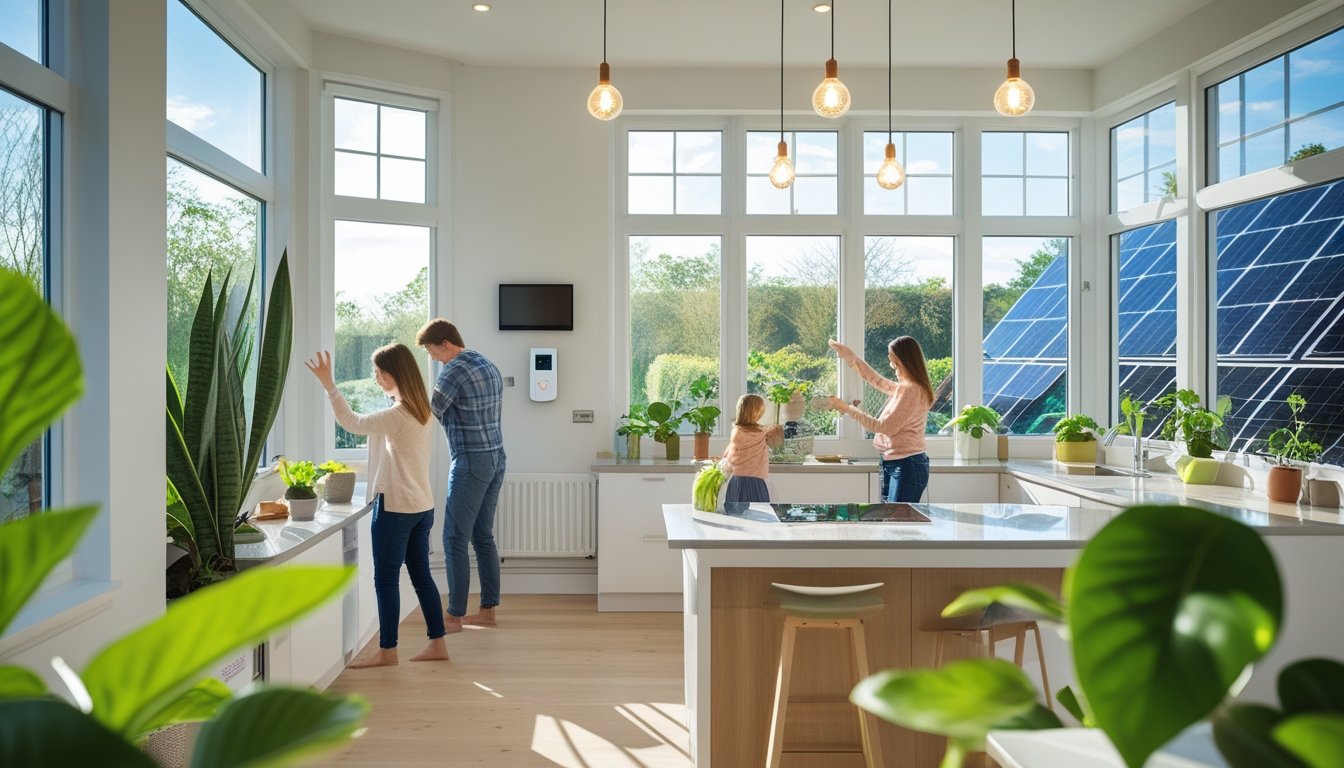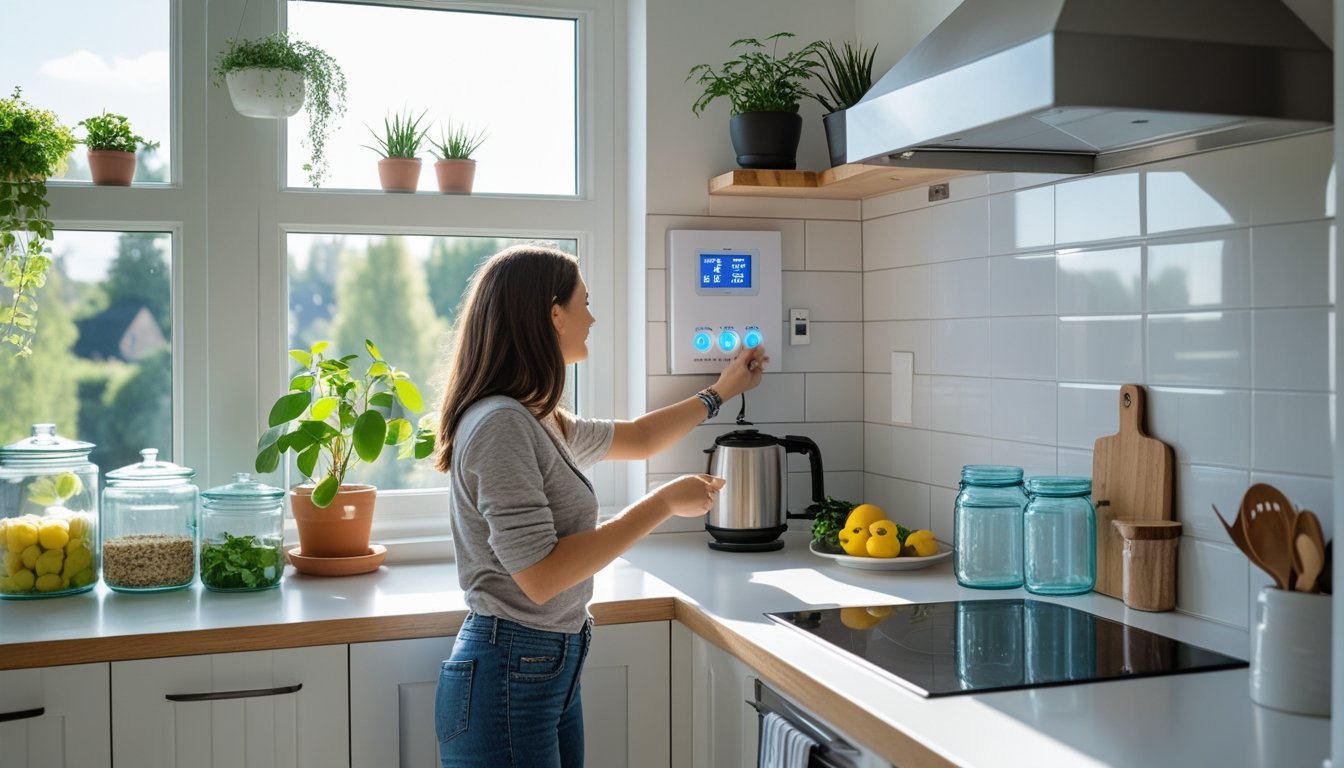Late updated: 16 Sep 2025 09:09
Written by: Sarah Hollister
Eco-Friendly Tips For Reducing Household Energy Consumption: Simple Strategies For Every Home
In today's world, as energy costs rise and environmental concerns grow, making our homes more energy-efficient has become a compelling necessity. We can significantly reduce our household energy consumption by implementing simple yet effective eco-friendly strategies. This not only helps us to save on utility bills but also contributes positively to reducing our carbon footprint.

Adopting energy-saving practices doesn't require drastic changes or significant investments. Sometimes, small adjustments, like unplugging unused electronics or switching to LED bulbs, can go a long way. We're here to guide you with practical tips and advanced tools to make your home greener and more sustainable.
Our aim is to inspire and equip each of us with the knowledge to make informed choices about energy consumption. By leveraging smart technologies and incorporating renewable energy sources, we can create a more sustainable living environment.
Key Takeaways
- Simple actions can significantly reduce energy use.
- Advanced methods and tools enhance efficiency.
- Common queries are addressed to assist our journey.
Essential Strategies for Reducing Household Energy Consumption
Reducing household energy consumption not only decreases utility bills but also contributes to a greener environment. Key strategies include conducting a thorough energy audit, optimising heating and cooling systems, upgrading appliances, and using efficient lighting solutions.
Conducting a Home Energy Audit
Conducting a home energy audit is the first step towards understanding our home's energy consumption. This involves a comprehensive examination to identify areas of energy waste. We can either hire professionals or, for a simpler assessment, utilise online tools and perform it ourselves. The focus should be on checking for leaks, poor insulation, and inefficient equipment. Using a smart meter can help track daily usage and identify peak times. By identifying problem areas, we can address inefficiencies, ultimately leading to significant energy savings. Regular audits ensure ongoing efficiency and help us adjust to any changes in energy consumption patterns.
Maximising the Efficiency of Heating and Cooling
Heating and cooling account for a large portion of our utility bills. To manage this, we can install a programmable thermostat or a smart thermostat to regulate temperatures. These devices can automatically adjust settings based on occupancy or time of day. Insulating walls, attics, and ducts reduces the burden on heating systems, lowering energy consumption. Sealing leaks around doors and windows enhances efficiency. Additionally, investing in an energy-efficient water heater or heat pumps can further decrease heating and cooling costs. Regular maintenance of our HVAC systems ensures they operate optimally and consume less energy.
Upgrading to Energy-Efficient Appliances and Products
Switching to energy-efficient appliances is an investment that pays off over time. Energy ratings, such as the EU Energy Label, guide us in choosing products with optimal performance and lower consumption. Refrigerators, dishwashers, and washing machines should be upgraded to models that use less power. Appliances with a standby power mode should be turned off completely when not in use. Energy-efficient products may have a higher upfront cost but result in long-term reductions in utility bills and carbon footprint. Staying informed about the latest advancements in appliance efficiency can guide our purchases and further enhance savings.
Switching to LED Bulbs and Smart Lighting
Lighting significantly impacts energy costs. Replacing traditional bulbs with LED bulbs is an effective way to save on electricity. LEDs consume up to 75% less energy compared to incandescent bulbs and last much longer, reducing the need for frequent replacements. Smart lighting systems, which can be programmed for schedules or controlled remotely, offer additional energy-saving benefits. Integrating sensors that automatically turn off lights in unoccupied rooms furthers efficiency. Investing in smart lighting not only impacts energy savings but also provides security benefits and convenience in managing home lighting.
Advanced Eco-Friendly Methods and Tools

Innovative approaches to reducing energy consumption in the household can be highly effective. By sealing air leaks, managing phantom loads, enhancing insulation, and utilising renewable energy, we're able to create a more energy-efficient home that contributes to an eco-friendly lifestyle.
Sealing Air Leaks with Caulking and Weather Stripping
Air leaks in our homes can lead to significant energy loss. Cold air sneaks in during winter and cool air escapes during summer, causing heating and cooling systems to work overtime.
We can tackle this problem by using caulking for small gaps and weather stripping around doors and windows. It's a simple but highly effective way to improve energy efficiency. Plus, focusing on areas like attics, basements, and crawl spaces can make a significant impact. By taking these steps, we're not only insulating our homes better but also lowering our energy bills.
Managing Phantom Loads with Advanced Power Strips
Phantom loads, or standby power, refer to the energy consumed by appliances even when they are turned off. It's shocking how much electricity is wasted this way.
One way to combat phantom loads is by using advanced power strips. These smart devices cut power to electronics when they're not in use. Unlike regular power strips, they are equipped to better manage power flow, ensuring devices only draw energy when needed. Using smart power strips, we're able to greatly reduce unnecessary electricity usage.
Enhancing Insulation and Window Efficiency
Proper insulation is essential for a more energy-efficient home. Adding or upgrading insulation in walls, attics, and floors can help keep temperatures stable. It also minimises the workload on our heating and cooling systems.
When it comes to windows, choosing energy-efficient windows with seals and coatings that reduce heat transfer is crucial. The National Fenestration Rating Council provides ratings to help us select the best options. For homes with skylights, ensuring they are energy efficient also plays a key role in our overall energy strategy.
Utilising Renewable Energy Systems
Renewable energy systems are powerful tools for reducing our reliance on nonrenewable energy sources. Solar panels are among the most effective, converting sunlight into electricity used to power our homes. Installing solar panels not only benefits the environment but can also offer tax credits and incentives.
Beyond solar, integrating systems such as wind turbines or geothermal heating can offer further energy savings. By moving towards renewable energy systems, we're working towards greater energy security while significantly decreasing our carbon footprint.
Frequently Asked Questions

In our quest to reduce household energy consumption, understanding effective strategies can help us achieve significant savings. From optimising insulation to choosing energy-efficient lighting and smart appliances, each aspect plays a critical role.
What are the most effective insulation techniques to reduce energy loss in homes?
Effective insulation involves using materials like fibreglass, foam, or cellulose to seal walls, roofs, and floors. Double or triple-glazed windows also help maintain indoor temperature. Properly insulating your home can significantly reduce heating and cooling costs by preventing energy loss.
How does installing solar panels impact household energy efficiency?
Installing solar panels can greatly enhance energy efficiency by harnessing renewable energy. Solar systems reduce dependency on the grid and lower electricity bills. The initial investment may be high, but long-term savings and environmental benefits make it worthwhile for many households.
What are the advantages of using LED lighting over traditional bulbs for energy saving?
LED lights offer substantial energy savings compared to traditional bulbs as they use up to 80% less energy. These lights also have a longer lifespan, which means fewer replacements and reduced waste. LEDs are a cost-effective and environmentally friendly choice for lighting.
Can smart thermostats significantly lower home heating and cooling costs?
Smart thermostats can optimise heating and cooling schedules based on household patterns. By reducing energy usage during peak times and adjusting temperatures when no one is home, they can lead to noticeable savings on energy bills, enhancing both convenience and efficiency.
What daily habits contribute to lessening household electricity usage?
Unplugging devices when not in use, using energy-efficient appliances, and turning off lights in empty rooms can make a difference. Additionally, washing clothes in cold water and taking shorter showers help. Small daily habits add up, playing a major role in reducing energy consumption.
What role do energy-efficient appliances play in minimising domestic energy consumption?
Energy-efficient appliances, typically rated with labels such as ENERGY STAR, consume less electricity while performing equally well. Replacing old appliances with these can lead to reduced energy bills. They also contribute to both cost efficiency and a lower carbon footprint.
